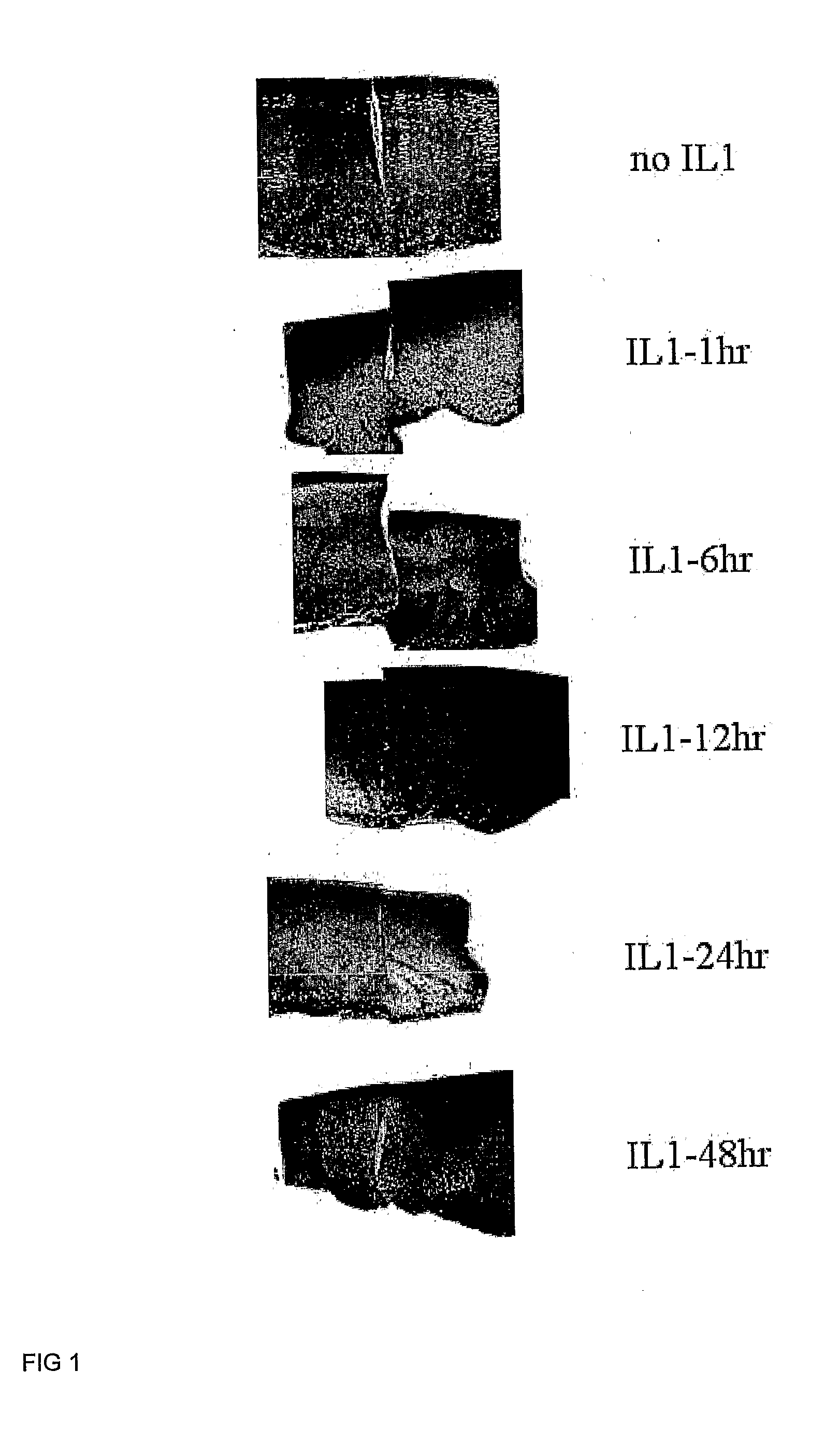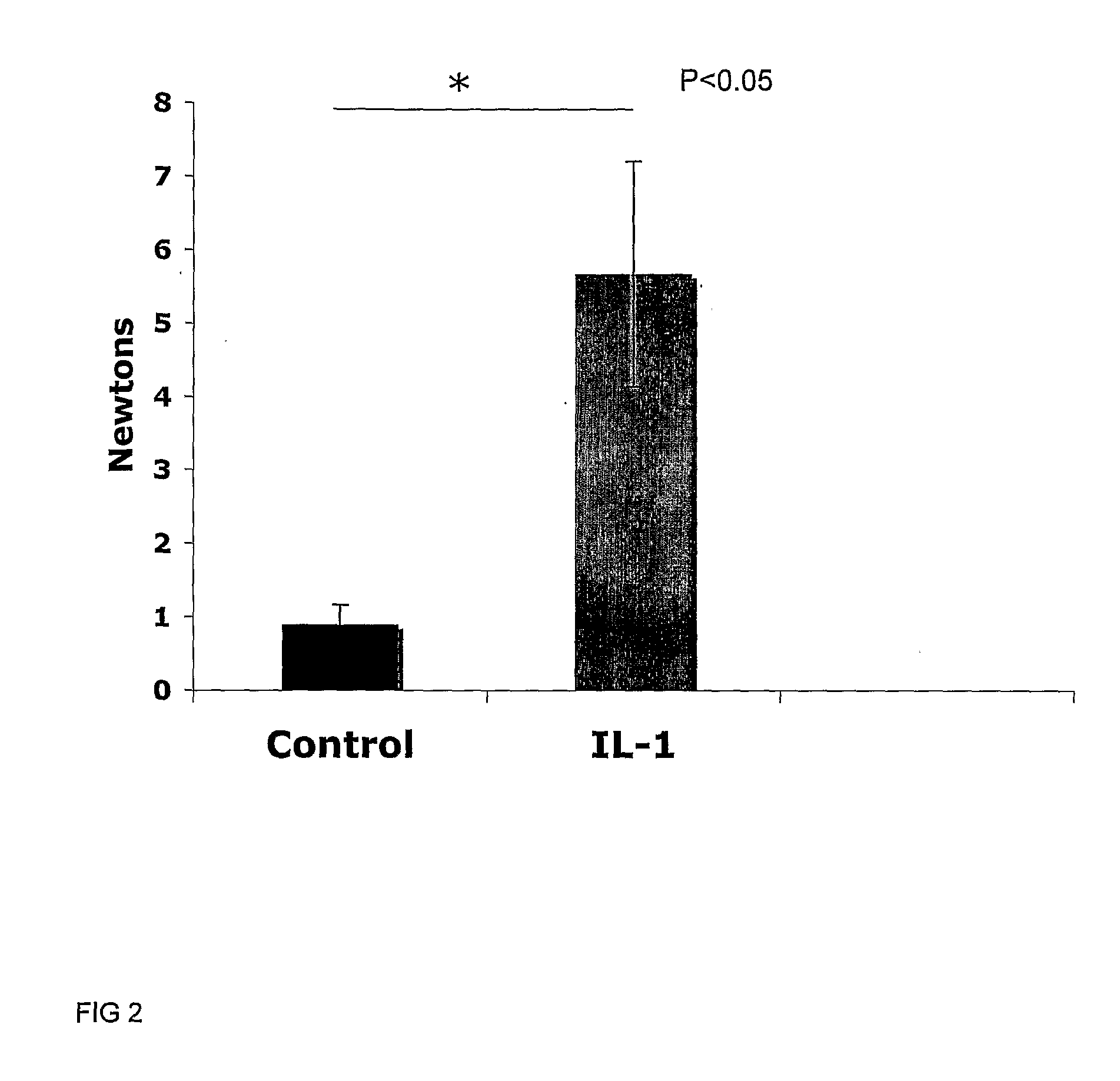Catabolic agents
a catabolic agent and catabolic technology, applied in the field of catabolic agents, can solve the problems of rarely healing, large lesions in injured cartilage, and inability to integrate cartilage, and achieve the effect of improving the therapeutic respons
- Summary
- Abstract
- Description
- Claims
- Application Information
AI Technical Summary
Benefits of technology
Problems solved by technology
Method used
Image
Examples
Embodiment Construction
[0109]Materials and Methods
[0110]Determination of the Optimum IL-1β Treatment Time for Integration
[0111]Six millimetre diameter cartilage explants from immature articular cartilage containing 3 mm diameter inner cores, both created using punch biopsy tools (Steifel), were placed in Dulbecco's modified Eagles medium (DMEM) culture medium containing various concentrations of interleukin-1β or tumour necrosis factor α (TNFα; Peprotech), or, the culture medium without cytokine as a control. The medium was removed after the nominated time and washed once with DMEM then replaced with DMEM medium containing 50 μg / ml ascorbate, 10 mM HEPES, gentamycin and supplemented with 1× insulin-transferrin-selenium (ITS; Sigma). For qPCR studies the explants were first allowed to equilibriate in serum containing medium for 3 days, then washed 3 times in serum-free DMEM before the treatment as described above. For long term culture following 2 hour cytokine treatment explants were treated immediately f...
PUM
| Property | Measurement | Unit |
|---|---|---|
| diameter | aaaaa | aaaaa |
| diameter | aaaaa | aaaaa |
| volumes | aaaaa | aaaaa |
Abstract
Description
Claims
Application Information
 Login to View More
Login to View More - R&D
- Intellectual Property
- Life Sciences
- Materials
- Tech Scout
- Unparalleled Data Quality
- Higher Quality Content
- 60% Fewer Hallucinations
Browse by: Latest US Patents, China's latest patents, Technical Efficacy Thesaurus, Application Domain, Technology Topic, Popular Technical Reports.
© 2025 PatSnap. All rights reserved.Legal|Privacy policy|Modern Slavery Act Transparency Statement|Sitemap|About US| Contact US: help@patsnap.com



